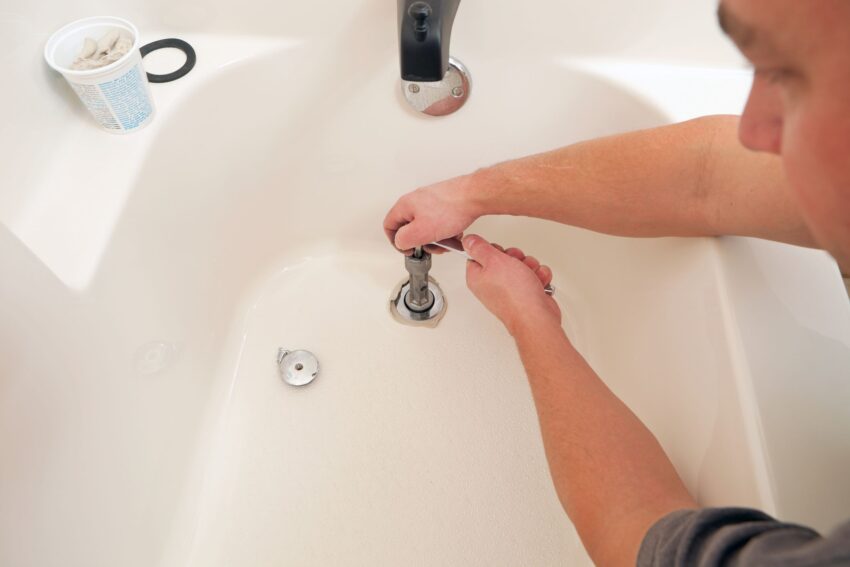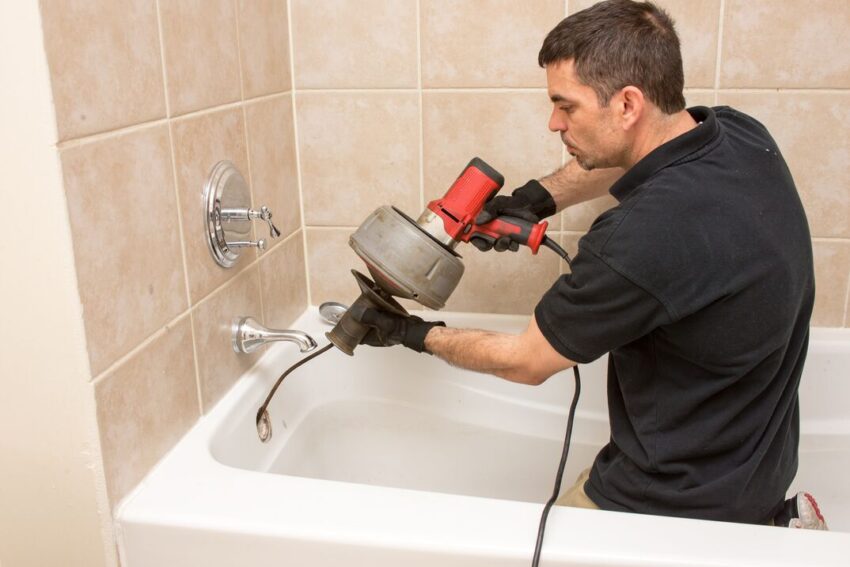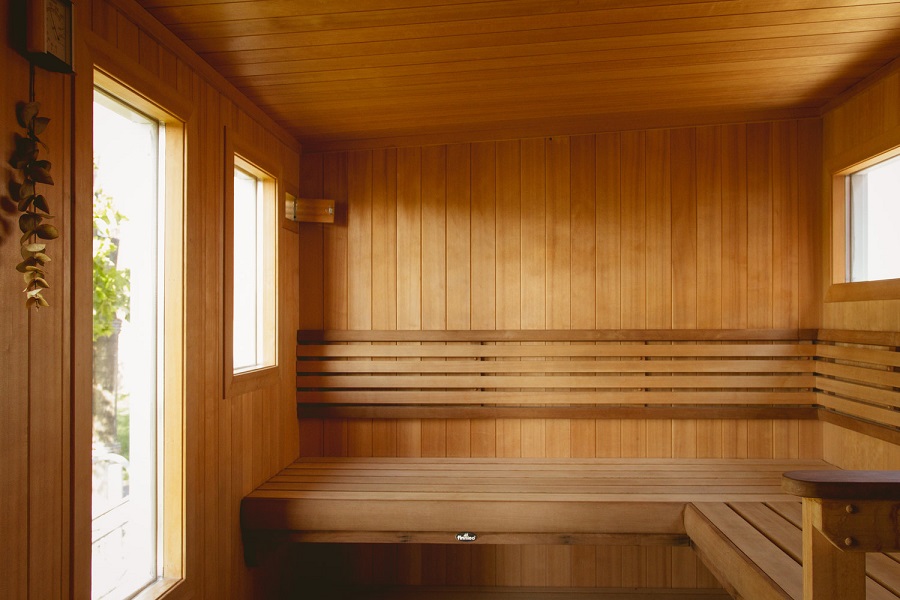Plumbing is a necessary part of our day to day lives that most people don’t think about until they need it. Whether you’re remodeling your bathroom or just trying to get rid of a drain clog, a trip lever tub drain won’t stay open is one of the most common plumbing problems out there. But once you understand what’s causing the issue, you can fix it in no time.
Why does the trip lever tub drain won’t stay open?
If your tub drain doesn’t stay open, you have a clog in the drain line. This is a common problem that can be caused by various things, from clothing and soap to hair and toothpaste. Here are four common culprits:
- Clothes and Soap: Bathing debris build-up over time will cause the small openings between the tub and the drain line to become blocked. To clear the blockage, try using a plunger to suction onto the obstruction and pull it out. If that doesn’t work, use a bucket or sink to pour water down the drain until the plunger or bucket floats. Then use a plunger or your hands to push the debris and water down the drain.
- Hair: If hair is blocking the drain, first try using a regular plunger on its lowest setting to suction onto the obstruction. If that fails, try using a plumber’s snake (a long tube with an opening at one end that can reach deep into tight spaces) to clear hair from the drain line. Be sure to wear gloves when using a plumber’s snake; even small amounts of grease can make it difficult for the snake to slide down the drain.
- Clogs: Try a plunger or snake if the problem is a clog. If that doesn’t work, you can use various chemicals, scouring agents and even steel wool to unclog your sink.
- Pipes: For easier access, attach old rags or dish towels to threaded pipes to make it easy for you to reach into tight spaces and clean them out.
- Plumbing defects: When your shower faucet leaks, try placing a single folded dollar bill in the hole where the handle shows and pushing it up against the interior of the faucet lever mechanism with a screwdriver so that water stops leaking from there instead of where it’s coming from ( the handle).
- Drain clogs: It’s easy to clear out a clog using a plunger or snake (see above), but there are other approaches you can try. For example, in some cases, it may be possible to remove the cap from the drain and use it as a lever to pull up the obstruction, or you may be able to fish around with a long-handled screwdriver or spoon until you can catch hold of obstruction and pull it out.
How to Fix a Tub Drain That Won’t Stay Open

You may have a plugged drain if your tub drain doesn’t stay open. Plugged drains can be caused by several things, from hair to soap to chunks of ice. In most cases, the easiest way to fix a plugged tub drain is to use a plunger. Here are four steps for fixing a plugged tub drain:
- Clear any obstructions from the drain using a plunger. This includes anything that could be blocking the flow of water, like pieces of hair, soap clumps, and ice cubes.
- Call a professional plumber if the problem is stubborn or if you don’t feel comfortable trying to fix it yourself. A professional can use special tools and techniques to unplug the drain and clear any obstructions.
- Pour a small amount of boiling water down the drain to loosen any debris. If this doesn’t work, try using a hot water and vinegar bucket. Both methods are highly acidic and should help break down any build-up inside the drainpipe.
- Use a plunger to force water through the sink drainage until there is a clear flow from the tub again. Once you’ve restored a good flow, try to remove all the debris that may have blocked the drainpipe. If the floor is hard, use a sponge or rag and some warm water to clean any debris away. Next, use a putty knife to unscrew any stubborn clogs in the pipes. Once you’ve removed all the obstructions, flush out the pipes with hot water and use a plunger to clear them again.
- Replace your stopper valve if you still find that there’s not enough water flowing through your sink drainage system after you’ve used hot water. The additional flow should be enough to clear any blockages in the pipes that can cause a leaky drainpipe or overflow in your bathtub.
Tips for Preventing Plugged Tub Drains in the Future
Preventing a plugged tub drain is not as daunting as you might think. There are a few simple tips that you can use to help keep your drains running smoothly. Follow these tips and you will be on your way to preventing future plumbing problems.
- Keep your drains clear: If clogged drains are the root of all plumbing problems, it makes sense to start by clearing them. First, ensure all debris has been removed from the drain system, including leaves, sticks, and other large objects. This will help reduce the likelihood of blockages forming in the first place.
- Use a plunger: A plunger is an invaluable tool for clearing clogged drains. Place the plunger on the drain opening and push and pull it up and down with steady pressure. This technique can break up any clumps or debris that has built up in the drain line.
- Clean out your sink traps: Sink traps are another common source of blockages in tub drainage systems. These traps collect washed dishes and other food waste from your kitchen sink and store it until it reaches the drain. Over time, this will cause clogs and blockages. You can prevent these by regularly cleaning the sink traps in your bathroom plumbing system.
- Call a plumber: If you do not want to do any plumbing work, you can call a plumber instead. A professional can take care of your drainage issues quickly and efficiently by clearing any blockages in your pipes while they are still small. They will also provide preventative maintenance instructions so you can avoid future problems5. Clean your drains: If all else fails, you can always remove the debris near the drain using a plunger or other tools.
Conclusion
A plumbing problem that can cause a tub drain to stay open is clogged hair. Hair, soap, and other debris can form a blockage on the pipe that connects your sink to the drain in your tub or shower, preventing water from flowing properly. This issue can be easily remedied by using a plunger or snake to clear the obstruction and allow the water to flow freely. In most cases, this fix will solve the drainage problem and prevent further damage. If you notice any signs of flooding in your home or basement, please call our team for assistance as soon as possible!





